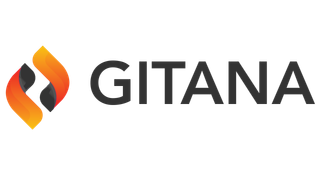Found 494 results for "gitana 4.0 developers api resources changeset get-repositories-repositoryid-changesets"
The search executed in 0.0026 seconds. That's fast.

|
Gitana 3.2 / Guide / Guide / ScriptingDocumentation Reference Optimize your Cloud CMS server-side scripting with flexible JavaScript, Handlebars, and FreeMarker support. (Gitana 3.2)
Score: 2.5108
|

|
Gitana 4.0 / Content Engine / ScriptingDocumentation Reference Enhance your server-side scripting with Cloud CMS's API for custom actions, rules, and dynamic behaviors. (Gitana 4.0)
Score: 2.5108
|

|
Gitana 3.2 / Guide / Guide / UI Developers Guide / Contexts / project-manage-contextDocumentation Reference Explore comprehensive project management with tools for settings, themes, UI, and developer resources. Streamline your workflow today. (Gitana 3.2)
Score: 2.5042
|

|
Gitana 4.0 / Developers / User Interface Customization / Contexts / project-manage-contextDocumentation Reference Efficiently manage and configure projects with tools for settings, roles, UI customization, and development features. (Gitana 4.0)
Score: 2.5042
|

|
Gitana 4.0 / Self Managed / KubernetesDocumentation Reference Discover our upcoming Kubernetes 4.0 configuration files. Contact support@gitana.io for access. (Gitana 4.0)
Score: 2.4869
|

|
Gitana 3.2 / Guide / Guide / API / Data Types / BranchDocumentation Reference Create isolated workspaces with branches; collaborate, freeze, or set read-only. Manage changesets and properties with ease. (Gitana 3.2)
Score: 2.4814
|

|
Gitana 4.0 / Content Engine / SecurityDocumentation Reference Ensure secure content access with Cloud CMS's robust security engine, offering fine-grained permissions and access control policies. (Gitana 4.0)
Score: 2.4795
|

|
Gitana 4.0 / Content Engine / Access Policies / ConditionsDocumentation Reference Explore detailed access policy conditions including And, Branch, Changeset, and more, for effective management. (Gitana 4.0)
Score: 2.4519
|

|
Gitana 3.2 / Guide / Guide / Docker / Configuration / UI ServerDocumentation Reference Cloud CMS UI Server: Extensible Node.js app for a robust editorial experience, integrates with the Cloud CMS API. (Gitana 3.2)
Score: 2.4411
|

|
Gitana 4.0 / Reference / Types / BranchDocumentation Reference Manage content with Branch: create, isolate, share projects, and track changes seamlessly. (Gitana 4.0)
Score: 2.4324
|

|
Gitana 3.2 / Guide / Guide / Getting StartedDocumentation Reference Discover Cloud CMS, an API-first solution for managing and publishing content for websites and mobile apps. Start now! (Gitana 3.2)
Score: 2.4008
|

|
Gitana 3.2 / Guide / Guide / Application Server / Installation / Standalone InstallationDocumentation Reference Install the Cloud CMS Application Server with ease. Connect using Node.js, Git, and simple setup instructions. (Gitana 3.2)
Score: 2.3933
|

|
Gitana 4.0 / Developers / Application Server / Installation / Standalone InstallationDocumentation Reference Set up a Cloud CMS Application Server using Node.js and Git to manage your content effortlessly. (Gitana 4.0)
Score: 2.3933
|

|
Gitana 3.2 / Guide / Guide / API / Data TypesDocumentation Reference Explore comprehensive guides on various data types including Application, Archive, Authentication Grant, and more for Gitana 3.2. (Gitana 3.2)
Score: 2.3931
|

|
Gitana 4.0 / Reference / Types / WorkflowDocumentation Reference Explore the Workflow API to streamline and automate your tasks on the Gitana platform efficiently. (Gitana 4.0)
Score: 2.3925
|

|
Gitana 3.2 / Guide / Guide / Docker / Upgrades / 3.2.89Documentation Reference Upgrade to Cloud CMS 3.2.89 for ARM64 support and improved performance. Ensure MongoDB 4.4+, Redis 6.x, and API cluster restart. (Gitana 3.2)
Score: 2.3634
|

|
Connect to your data where it livesBlog Post 'Transform your data with Gitana, seamlessly building a rich knowledge graph for enhanced RAG applications and insightful data management.'
Score: 2.3598
|

|
Gitana 3.2 / Guide / Guide / Actions / OCR Extract NodeDocumentation Reference OCR Extract Node runs OCR extraction on nodes with optional service ID customization. (Gitana 3.2)
Score: 2.356
|

|
Gitana 3.2 / Guide / Guide / Docker / Upgrades / 3.2.84Documentation Reference Discover Cloud CMS 3.2.84 with ARM-64 support, superior performance, and simplified upgrades. Access release notes and upgrade tools. (Gitana 3.2)
Score: 2.3156
|

|
Gitana 3.2 / Guide / Guide / Docker / Upgrades / 3.2.85Documentation Reference Discover Cloud CMS 3.2.85 enhancements with ARM-64 support, upgrade info, and improved performance. (Gitana 3.2)
Score: 2.3156
|

|
Gitana 3.2 / Guide / Guide / Docker / Upgrades / 3.2.86Documentation Reference Upgrade to Cloud CMS 3.2.86 for ARM-64 support, improved performance, and seamless deployment with AWS Graviton processors. (Gitana 3.2)
Score: 2.3156
|

|
Gitana 4.0 / Reference / Types / Workflow TaskDocumentation Reference Explore detailed API methods for managing workflow tasks, including adding, checking permissions, and updating tasks. (Gitana 4.0)
Score: 2.287
|

|
Gitana 3.2 / Guide / Guide / UI Developers Guide / Samples / Developer Menu ItemsDocumentation Reference Enable Developer menu for collaborators in Cloud CMS with simple configuration. Learn how to adjust default settings easily. (Gitana 3.2)
Score: 2.2783
|

|
Gitana 4.0 / Developers / User Interface Customization / Samples / Developer Menu ItemsDocumentation Reference Enable Developer menu in Cloud CMS for 'collaborator' role with configuration tips and examples. (Gitana 4.0)
Score: 2.2783
|

|
Gitana 3.2 / Guide / Guide / Application Server / Services / LocksDocumentation Reference Efficiently coordinate cluster resources with Locks Service using Redis in your application server setup. (Gitana 3.2)
Score: 2.2406
|
